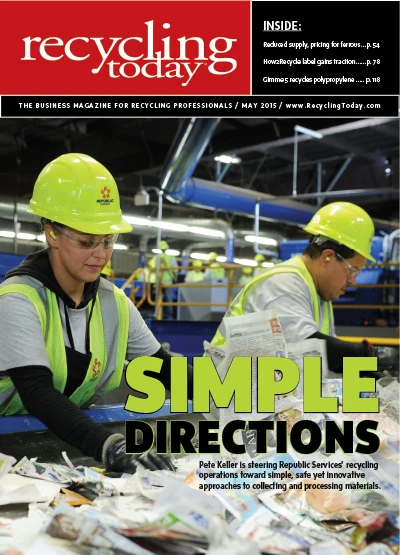Speakers at the Institute of Scrap Recycling Industries (ISRI) 2015 Convention & Exposition Spotlight on Plastics session described trends shaping the plastics recycling industry. Surendra Borad of Gemini Corp., Antwerp, Belgium, provided a European perspective, while Kathy Xuan of Parc Corp., Romeoville, Illinois, provided a look at the market in China from the perspective of someone with operations in that country as well as in the U.S.
Borad mentioned that the European Commission scrapped the previous administration’s circular economy plan, which proposed a 70 percent recycling and reuse target for 2030, setting an 80 percent recycling rate for packaging by 2030. The original proposal would have banned recyclable plastics, metals, glass, paper, cardboard and biodegradable material from landfill disposal by 2025.
He added that the current European Commission understands that economics also must be considered, not just the environment, in developing a revised proposal.
Borad also discussed the importance of export markets to European processors and brokers when it comes to plastic scrap. He said 3 million metric tons of the material are exported from Europe annually. The U.K., for instance, lacks sufficient capacity to recycle all of the plastic scrap generated within that country, Borad explained, noting that country’s supply of plastic scrap outnumbers its capacity to recycle this material by a ratio of 4 to 1.
Despite the importance of export markets, European Union (EU) countries may export only to those countries that have taken the time to fill out a questionnaire on scrap imports. For the last year, only 79 countries did so, he said. However, Borad noted, U.S. companies can export their plastic scrap to 169 countries.
On its response to this questionnaire, he added, Bangladesh indicated that it would allow only imports of mixed plastics as opposed to single grades of recovered plastics. He described this as “very strange.”
When it comes to pricing for plastic scrap, Borad said, “There is no direct linear correlation between oil and plastic scrap prices.”
He added, “The market is still immature. Prices also are affected by regulatory policies and quality.”

Xuan said China’s Operation Green Fence led to a significant turnaround in the plastics recycling business. She said the number of companies approved to ship this material to China has declined from 1,879 in 2012 to 1,582 in 2014, while the volume of material imported has increased, reaching 17.6 million metric tons in 2014 from nearly 15 million metric tons in 2012.
Of the various types of plastic scrap, Xuan said, polyethylene (PE) accounted for 46.4 percent of China’s total plastic scrap imports in 2014. PET (polyethylene terephthalate) was next in line, accounting for nearly 25 percent of imported plastics in 2014.
She added that Southeast Asian countries such as Malaysia are sometimes stopping points for plastic scrap that is ultimately shipped to China. Xuan said the material is cleaned up and reground there for shipment to China.
The 2015 ISRI Convention & Exposition was April 21-25 in Vancouver, British Columbia.

Explore the May 2015 Issue
Check out more from this issue and find your next story to read.
Latest from Recycling Today
- Aqua Metals secures $1.5M loan, reports operational strides
- AF&PA urges veto of NY bill
- Aluminum Association includes recycling among 2025 policy priorities
- AISI applauds waterways spending bill
- Lux Research questions hydrogen’s transportation role
- Sonoco selling thermoformed, flexible packaging business to Toppan for $1.8B
- ReMA offers Superfund informational reports
- Hyster-Yale commits to US production





